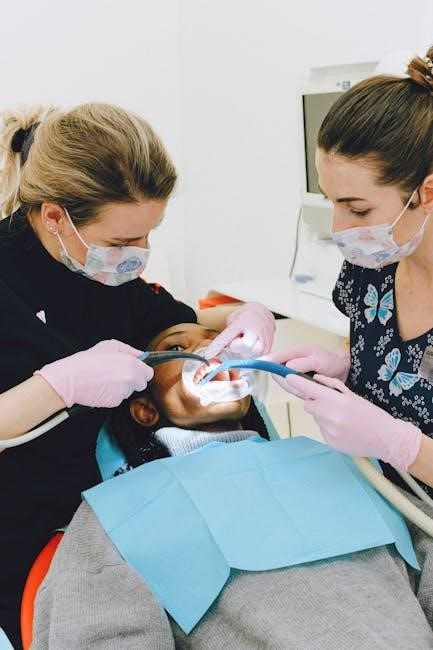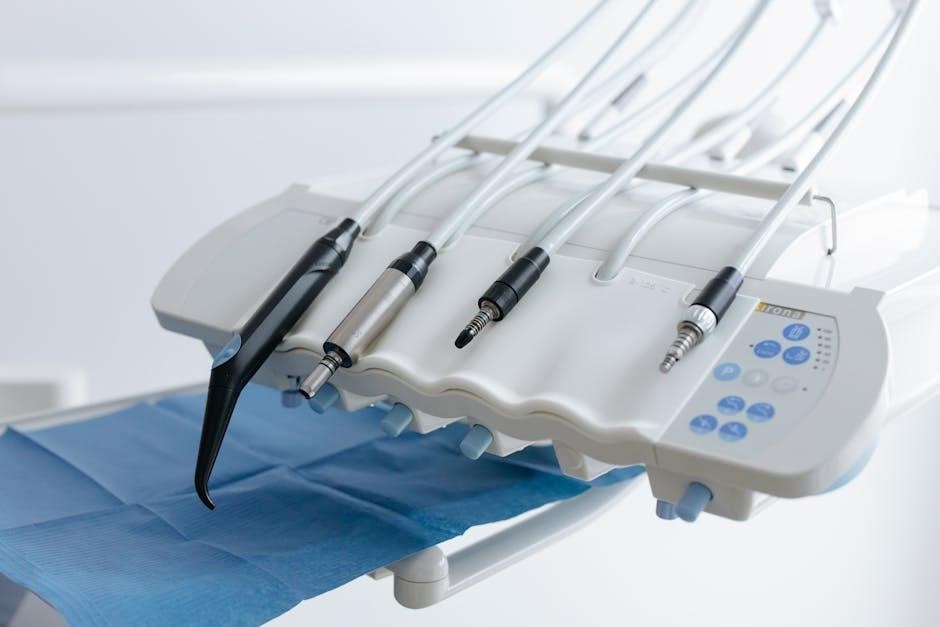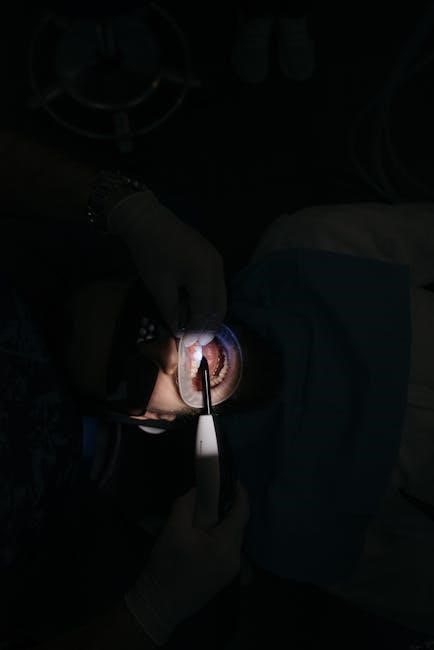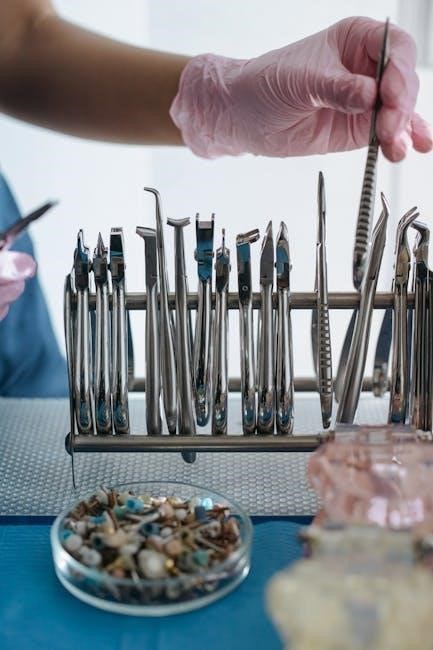
Oral Hygiene Instructions Dental Code: A Comprehensive Guide
This guide delves into the dental code D1330, oral hygiene instructions, according to the American Dental Association. It emphasizes patient education on brushing, flossing, and using oral hygiene aids for effective plaque removal and optimal oral health, which should be documented.
Oral hygiene instructions are a cornerstone of preventive dental care, empowering patients to maintain optimal oral health. These instructions, often delivered by dental hygienists, encompass various techniques and tools for effective plaque removal. Proper brushing, flossing, and the use of specialized aids are integral components.
Dental codes, such as D1330, serve as a standardized system for reporting dental procedures and services to insurance companies. Code D1330 specifically designates oral hygiene instructions, allowing dental professionals to accurately document and bill for the time and expertise dedicated to patient education.
Understanding the nuances of dental codes is crucial for both dental professionals and patients. Accurate coding ensures appropriate reimbursement for services rendered and facilitates clear communication between providers and insurance carriers. Furthermore, patients benefit from knowing which services are covered under their dental plan and how to interpret their dental bills.

This comprehensive guide aims to demystify oral hygiene instructions and their corresponding dental codes, providing valuable insights for dental professionals seeking to optimize their coding practices and for patients striving to improve their oral health literacy.
Understanding Dental Code D1330: Oral Hygiene Instructions
Dental code D1330 is specifically designated for “oral hygiene instructions.” This code encompasses the time and effort dental professionals invest in educating patients about effective oral hygiene practices. It goes beyond a cursory overview, involving detailed guidance on techniques and tools.
The essence of D1330 lies in empowering patients to take control of their oral health through personalized instruction. This may include demonstrating proper brushing and flossing techniques, recommending specific oral hygiene aids, and tailoring advice to individual needs and risk factors.
Accurate use of D1330 requires thorough documentation of the instructions provided, the patient’s oral hygiene status, and any follow-up plans. This documentation supports the billing process and serves as a valuable record of the patient’s education and progress.
It is important to note that D1330 is often used in conjunction with other preventive care codes, such as D1110 (prophylaxis) and D0120 (periodic oral evaluation). This integrated approach ensures that patients receive comprehensive care, encompassing both professional cleaning and personalized oral hygiene education, as well as a thorough examination.
Ultimately, D1330 plays a vital role in promoting oral health by equipping patients with the knowledge and skills necessary to maintain a healthy smile.
Components of Oral Hygiene Instructions
Effective oral hygiene instructions encompass several key components, tailored to each patient’s unique needs. A fundamental element is proper tooth brushing technique, which involves demonstrating the correct angle, pressure, and motion for removing plaque and debris. This often includes recommending specific types of toothbrushes, such as manual or electric, based on individual dexterity and preferences.
Another critical component is effective flossing methods. Patients should receive clear guidance on how to use floss correctly, including the proper technique for maneuvering the floss between teeth and along the gumline. Alternative interdental cleaning aids, like floss picks or interdental brushes, may be recommended based on the patient’s anatomy and ability to use traditional floss.

The use of special oral hygiene aids forms another important part. This could involve recommending specific types of mouthwash, tongue scrapers, or other tools to address individual concerns. Instructions on proper usage and potential benefits are essential.
Furthermore, oral hygiene instructions should emphasize the importance of regular dental visits. Reinforcing the need for professional cleanings and examinations helps patients understand the role of preventive care in maintaining long-term oral health.
Finally, the benefits of maintaining optimal oral health should be clearly communicated. Highlighting the link between oral health and overall well-being can motivate patients to adopt and maintain good oral hygiene habits.
Proper Tooth Brushing Techniques
Mastering proper tooth brushing techniques is crucial for effective plaque removal and maintaining optimal oral health. A fundamental aspect is using the correct toothbrush. Both manual and electric toothbrushes can be effective, but the choice depends on individual preferences and dexterity. Soft-bristled brushes are generally recommended to avoid damaging the gums.
The brushing technique itself is paramount. The modified Bass technique, which involves angling the bristles towards the gumline at a 45-degree angle and using short, vibrating strokes, is often recommended by dental professionals. This method effectively removes plaque from the gingival sulcus, the space between the tooth and gum.
The sequence of brushing is also important. Patients should be instructed to brush all surfaces of each tooth, including the outer, inner, and chewing surfaces. A systematic approach ensures that no areas are missed.
The duration of brushing is another key factor. Dental professionals typically recommend brushing for at least two minutes, twice a day. Using a timer or a toothbrush with a built-in timer can help patients achieve the recommended brushing time.
Finally, proper rinsing is essential. After brushing, patients should rinse their mouth thoroughly with water or an antibacterial mouthwash to remove any remaining debris.
Effective Flossing Methods
Effective flossing is an indispensable component of maintaining optimal oral hygiene, complementing tooth brushing by removing plaque and debris from areas that toothbrushes cannot reach. The correct flossing technique is essential to maximize its benefits and prevent gum damage.
The first step involves selecting the right type of floss. While waxed and unwaxed floss are common, other options like floss picks and interdental brushes may be more suitable for individuals with dexterity issues or tight spaces between teeth.
The flossing technique itself is crucial. Patients should be instructed to use about 18 inches of floss, wrapping most of it around their middle fingers, leaving a few inches to work with. The floss should be gently guided between the teeth using a sawing motion to avoid snapping it against the gums.
Once the floss is between the teeth, it should be curved into a “C” shape against one tooth, sliding it gently under the gumline. This process should be repeated for the adjacent tooth.
The sequence of flossing is also important. Patients should be encouraged to floss all teeth, including the back molars. A systematic approach ensures that no areas are missed.
Finally, proper disposal of floss is essential to prevent the spread of bacteria. Used floss should be discarded in a trash can.
Use of Special Oral Hygiene Aids
Beyond brushing and flossing, special oral hygiene aids play a crucial role in comprehensive oral care, catering to individual needs and addressing specific challenges. These aids enhance plaque removal, improve gum health, and contribute to overall oral well-being.
Interdental brushes are small, bristled brushes designed to clean between teeth, particularly where spaces are wider or around orthodontic appliances. They effectively remove plaque and debris from these hard-to-reach areas, promoting gum health and preventing inflammation.
Oral irrigators, also known as water flossers, use a stream of pulsating water to flush out plaque and food particles from between teeth and below the gumline. They are particularly beneficial for individuals with braces, periodontal disease, or difficulty flossing.
Tongue scrapers or cleaners remove bacteria, food debris, and dead cells from the surface of the tongue, reducing bad breath and improving taste sensation. Regular tongue cleaning contributes to a cleaner and healthier mouth.
Antimicrobial mouthwashes contain ingredients that kill or inhibit the growth of bacteria in the mouth. They can help reduce plaque buildup, prevent gingivitis, and freshen breath. However, it’s crucial to use them as directed and avoid overuse, as some mouthwashes can have side effects.
Proper instruction on the use of these aids is essential. Dental professionals should demonstrate the correct techniques and provide personalized recommendations based on individual needs.
Importance of Regular Dental Visits
Regular dental visits are paramount for maintaining optimal oral health and preventing dental problems; These visits serve as a cornerstone of preventive care, allowing dental professionals to detect and address issues early on, before they escalate into more serious conditions.
During a routine dental visit, a comprehensive examination is performed to assess the overall health of the teeth, gums, and oral tissues. This includes checking for signs of tooth decay, gum disease, oral cancer, and other abnormalities.
Professional teeth cleaning, also known as prophylaxis, is an integral part of regular dental visits. Dental hygienists remove plaque and tartar buildup from teeth, especially in areas that are difficult to reach with brushing and flossing. This helps prevent gum disease and tooth decay.

Dental X-rays may be taken to detect hidden problems, such as cavities between teeth, bone loss, and impacted teeth. X-rays provide valuable information that cannot be seen during a visual examination.
Furthermore, dental visits provide an opportunity for personalized oral hygiene instruction. Dental professionals can assess your brushing and flossing techniques and provide guidance on how to improve your oral hygiene routine.
Early detection and treatment of dental problems can save time, money, and discomfort in the long run. Regular dental visits are an investment in your oral health and overall well-being.

Benefits of Maintaining Optimal Oral Health
Maintaining optimal oral health extends far beyond just a bright smile; it’s a cornerstone of overall well-being; The benefits are multifaceted, influencing physical health, self-esteem, and even social interactions.
Firstly, good oral hygiene significantly reduces the risk of dental caries (cavities) and periodontal disease (gum disease). These conditions can lead to tooth loss, pain, and the need for costly restorative treatments. By diligently brushing, flossing, and attending regular dental check-ups, individuals can safeguard their teeth and gums.
Furthermore, a healthy mouth contributes to improved systemic health. Research has established links between oral infections and chronic diseases such as diabetes, heart disease, and respiratory infections. Maintaining optimal oral health can help manage or prevent these conditions.
Beyond physical health, a confident smile can boost self-esteem and improve social interactions. Healthy, clean teeth enhance appearance, leading to increased confidence and a willingness to engage in social activities.
Moreover, good oral hygiene can prevent bad breath (halitosis), which can be embarrassing and socially isolating. Regular brushing, flossing, and tongue scraping can eliminate odor-causing bacteria in the mouth.
Finally, investing in oral health can save money in the long run by preventing costly dental treatments. Regular preventive care is more affordable than addressing advanced dental problems.
Documentation Requirements for Code D1330
Accurate and detailed documentation is crucial when utilizing dental code D1330 for oral hygiene instructions. Proper record-keeping ensures clarity for insurance claims, facilitates consistent patient care, and provides a legal record of the services provided.
Firstly, the documentation must clearly state that oral hygiene instructions were provided to the patient. A simple statement like “Oral hygiene instructions given” is insufficient; the record should detail the specific instructions tailored to the patient’s needs.
Secondly, the documentation should include the specific techniques and methods taught to the patient. This may include tooth brushing techniques (e.g., modified Bass, Stillman), flossing methods (e.g., spool method, floss picks), and the proper use of any special oral hygiene aids (e.g., interdental brushes, oral irrigators).
Thirdly, the patient’s oral hygiene status should be documented, including any areas of concern, such as plaque accumulation, gingival inflammation, or bleeding upon probing.
Furthermore, any follow-up plans or recommendations should be clearly recorded. This may include scheduling a follow-up appointment to assess the patient’s progress or recommending additional oral hygiene aids.
Finally, the documentation should be legible, accurate, and dated. It should also include the name and credentials of the dental professional who provided the instructions.
Examples of Oral Hygiene Instructions in Practice
To illustrate the application of oral hygiene instructions (D1330) in practice, consider a few scenarios. In the first case, a patient presents with generalized gingivitis and heavy plaque accumulation. The dental hygienist would begin by educating the patient on the etiology of gingivitis and the role of plaque in its development.
Next, the hygienist would demonstrate proper tooth brushing techniques, such as the modified Bass technique, emphasizing the importance of angling the toothbrush bristles towards the gumline to effectively remove plaque. The patient would then practice the technique under the hygienist’s supervision, receiving feedback and guidance.
In another scenario, a patient with orthodontic appliances requires specific oral hygiene instructions. The hygienist would demonstrate how to use interdental brushes and floss threaders to clean around brackets and wires, ensuring thorough plaque removal in these difficult-to-reach areas.
Furthermore, a patient with a history of periodontal disease may require instruction on using an oral irrigator to flush out bacteria and debris from periodontal pockets. The hygienist would demonstrate the proper technique and emphasize the importance of using the irrigator at a low pressure setting.
Finally, in each case, the hygienist would provide personalized recommendations based on the patient’s individual needs and oral hygiene status, reinforcing the importance of consistent home care and regular dental visits.
Relationship of D1330 with Other Dental Codes (D1110, D0120)
Dental code D1330, representing oral hygiene instructions, often intertwines with other essential dental codes like D1110 (prophylaxis – adult) and D0120 (periodic oral evaluation). Understanding their relationship is crucial for accurate coding and comprehensive patient care.
D0120, the periodic oral evaluation, serves as the foundation. During this examination, the dentist assesses the patient’s oral health, identifying areas of concern such as plaque accumulation, gingivitis, or potential risk factors. This evaluation often leads to the need for D1330, where tailored oral hygiene instructions are provided to address the identified issues.
Following the oral hygiene instructions, D1110, the adult prophylaxis, may be performed. This procedure involves removing plaque, calculus, and stains from the teeth. The effectiveness of prophylaxis is enhanced when combined with proper oral hygiene practices taught under D1330, empowering patients to maintain their oral health between visits.
In essence, D0120 identifies the need, D1330 educates and empowers, and D1110 provides the professional cleaning. These codes work synergistically to deliver comprehensive preventive dental care, promoting long-term oral health and minimizing the risk of future dental problems.
Resources for Dental Professionals and Patients
Numerous resources are available to support dental professionals and patients in understanding and implementing effective oral hygiene practices related to dental code D1330. These resources range from professional organizations to educational programs and online platforms.
For dental professionals, the American Dental Association (ADA) offers comprehensive guidelines, coding information, and continuing education courses related to oral hygiene instructions. Dental journals and online forums, like Dentaltown, provide platforms for sharing best practices and discussing complex cases. Practice Booster’s Code Advisor system is a comprehensive CDT coding resource.
Patients can benefit from educational resources like the “Smiles For Life” curriculum, which integrates oral health into primary care. Many dental offices provide customized oral hygiene instructions and demonstrations. Online videos and websites offer visual aids and step-by-step guides on proper brushing, flossing, and using interdental cleaning devices.
Furthermore, dental hygienists play a crucial role in educating patients and tailoring oral hygiene regimens to their individual needs. They can provide personalized recommendations and address specific concerns, ensuring that patients have the knowledge and tools to maintain optimal oral health;
Leave a Reply
You must be logged in to post a comment.